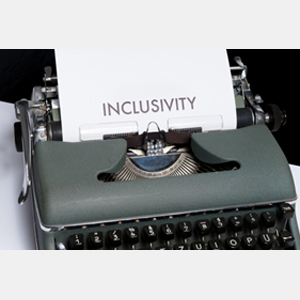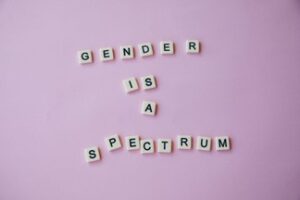In our ever-evolving society, it is imperative that we strive for inclusivity and ensure that everyone feels seen and heard. One way we can achieve this is by breaking down the language barriers surrounding transgender identities. By understanding and using the correct terminology, we can contribute to a more compassionate and understanding society. With the aim of promoting inclusivity, this article delves into the must-know transgender terms that everyone should be familiar with. Whether you are a member of the transgender community, an ally, or simply eager to expand your knowledge, this article acts as a valuable resource. By exploring the definitions and explanations of terms, we can foster a culture of respect and empathy. This education is crucial to ensure that we create safe spaces and develop a society that recognizes and celebrates the diversity of human experiences. So, let’s break down the language barrier surrounding transgender identities and work toward building a society that embraces everyone, regardless of their gender identity.
Understanding transgender terminology
Language is a powerful tool that shapes our understanding of the world. By understanding and using the correct transgender terminology, we can create a more inclusive society. Transgender terminology refers to the words and phrases used to describe and discuss transgender identities and experiences. One of the fundamental terms to grasp is “gender identity.” Gender identity refers to an individual’s deeply-felt sense of their own gender. It may or may not align with the sex assigned to them at birth. It is important to understand that gender identity is not determined by one’s physical appearance or biological characteristics, but rather by how a person identifies themselves. Another crucial term is “gender expression.” Gender expression refers to the way individuals outwardly express their gender identity, which includes their behavior, clothing, and other personal characteristics. It is important to note that gender expression is not confined to societal expectations or stereotypes. People should be free to express themselves in a way that aligns with their gender identity, without fear of judgment or discrimination.
In addition to these terms, it is essential to understand the concept of being “non-binary.” Non-binary individuals do not exclusively identify as either male or female. They may identify as both genders, neither gender, or as a different gender altogether. Embracing and respecting non-binary individuals is crucial in creating a more inclusive society that acknowledges the diversity of gender identities.
The importance of using inclusive language
Using inclusive language is crucial in creating an environment where everyone feels respected and valued. For transgender individuals, being misgendered or referred to by incorrect pronouns can be deeply hurtful and invalidating. By using the correct terminology and respecting someone’s gender identity, we can contribute to their overall well-being and mental health. By incorporating inclusive language into our everyday conversations, we can create safe spaces for transgender individuals. This means using gender-neutral pronouns, such as “they/them,” when referring to someone whose gender identity we are unsure of. It also means not making assumptions about someone’s gender identity based on their appearance or physical attributes. Instead, we should listen to how individuals identify themselves and use the appropriate language to address and refer to them. Inclusive language extends beyond pronouns and encompasses the use of respectful and affirming terms. Furthermore, using inclusive language challenges societal norms and helps to break down the barriers that transgender individuals face. It promotes empathy and understanding, fostering a more compassionate society that celebrates diversity. By using inclusive language, we create a world where everyone feels seen, heard, and valued.
The evolution of transgender terminology
Transgender terminology, like any language, is constantly evolving to reflect the experiences and identities of the community it represents. It is important to recognize that language is not fixed but rather a fluid and dynamic tool that adapts to societal changes. The evolution of transgender terminology has been driven by the need for greater visibility and understanding. As society becomes more aware of the diverse range of gender identities, new terms emerge to describe these experiences. For example, the term “cisgender” refers to individuals whose gender identity aligns with the sex they were assigned at birth. This term helps to distinguish between transgender and non-transgender individuals, highlighting that being transgender is not the default or “normal” experience.
Another term that has gained recognition is “gender dysphoria.” Gender dysphoria refers to the distress or discomfort individuals may experience when their gender identity does not align with the sex they were assigned at birth. It is crucial to understand that gender dysphoria is a natural response to the incongruence between one’s gender identity and assigned sex. By using this term correctly, we can foster empathy and understanding for individuals experiencing gender dysphoria.
Gender identity vs. sexual orientation
It is important to differentiate between gender identity and sexual orientation as these terms are often misunderstood or conflated. Gender identity refers to an individual’s internal sense of their own gender, whereas sexual orientation relates to an individual’s romantic, emotional, or sexual attraction to others. Transgender individuals can identify as any sexual orientation, just like cisgender individuals. For example, a transgender woman may identify as lesbian if she is attracted to women, or as heterosexual if she is attracted to men. Understanding the distinction between gender identity and sexual orientation is crucial in respecting and acknowledging the complexity of individual experiences.
Common misconceptions about transgender individuals
Misconceptions and stereotypes about transgender individuals persist in society, contributing to discrimination and marginalization. It is important to debunk these misconceptions and foster a culture of understanding and acceptance. One common misconception is that being transgender is a choice or a phase. However, numerous scientific studies and the experiences of transgender individuals themselves have consistently shown that gender identity is an innate aspect of a person’s being. It is not something that can be changed or chosen. Another misconception is that being transgender is a mental illness. This belief is not supported by scientific evidence or recognized by major medical organizations. Gender dysphoria, the distress experienced by some transgender individuals, is a recognized medical condition, but being transgender itself is not considered a mental illness.
Key transgender terms and their definitions
To foster a more inclusive society, it is vital to understand and use key transgender terms appropriately. Here are a few terms and their definitions:
- Gender dysphoria: The distress or discomfort individuals may experience when their gender identity does not align with the sex they were assigned at birth. It is important to note that not all transgender individuals experience gender dysphoria.
- Cisgender: A term used to describe individuals whose gender identity aligns with the sex they were assigned at birth. It is the opposite of transgender.
- Gender identity: A person’s deeply-felt sense of their own gender, which may or may not align with the sex assigned to them at birth.
- Gender expression: The way individuals outwardly express their gender identity, including their behavior, clothing, and personal characteristics.
- Intersectionality: The interconnected nature of social categorizations such as race, class, and gender, which can create overlapping and interdependent systems of discrimination or disadvantage.
- Gender affirming care: Medical and psychological interventions that aim to affirm and support an individual’s gender identity, such as hormone therapy or gender-affirming surgeries.
How to use transgender terms respectfully
Using transgender terms respectfully involves several key practices. First and foremost, it is important to listen and learn from transgender individuals themselves. Each person’s experience is unique, and they should be the authority on their own gender identity. Respecting someone’s gender identity means using the name and pronouns they prefer. If you are unsure of someone’s pronouns, it is appropriate to politely ask or use gender-neutral pronouns until you are informed otherwise. It is also important to avoid making assumptions about someone’s gender identity based on their appearance or any preconceived notions. Using inclusive language also means being mindful of the impact of our words. Avoid using derogatory language or slurs that perpetuate harmful stereotypes or belittle transgender individuals. Treat all individuals with respect and dignity, regardless of their gender identity.
Conclusion: Embracing inclusivity in our language
Let us strive to educate ourselves and others, challenge misconceptions, and be mindful of the impact of our words. Together, let’s break down the language barrier and build a society that embraces everyone, regardless of their gender identity.
Have you found this article helpful and/or informative? Are there other must-know trnasgender terms that we left out? We’d love to know what you think! Email us at glambmarketing@gmail.com or message us on our Facebook page. And be sure to check out more great tips and articles on our blog!

